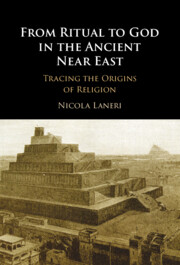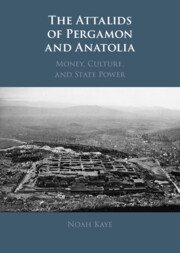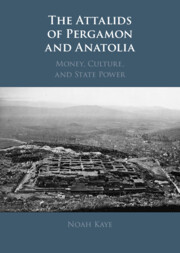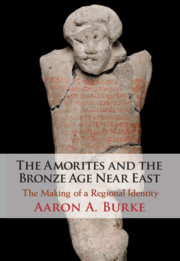Refine search
Actions for selected content:
53 results
4 - Potnia of the Labyrinth, Initiation of the King, and the Triple Sacrifice
-
- Book:
- Myth, Ritual, and Society in Mycenaean Anatolia
- Published online:
- 18 July 2025
- Print publication:
- 07 August 2025, pp 131-161
-
- Chapter
- Export citation
2 - Mycenaean and Vedic Sacrificial Posts
-
- Book:
- Myth, Ritual, and Society in Mycenaean Anatolia
- Published online:
- 18 July 2025
- Print publication:
- 07 August 2025, pp 47-66
-
- Chapter
- Export citation
6 - Nart Saga, Indo-Iranian Twins, and Dioscurias
-
- Book:
- Myth, Ritual, and Society in Mycenaean Anatolia
- Published online:
- 18 July 2025
- Print publication:
- 07 August 2025, pp 194-237
-
- Chapter
- Export citation
7 - Golden Fleeces
-
- Book:
- Myth, Ritual, and Society in Mycenaean Anatolia
- Published online:
- 18 July 2025
- Print publication:
- 07 August 2025, pp 238-272
-
- Chapter
- Export citation
5 - Mitannian and Anatolian Triads
-
- Book:
- Myth, Ritual, and Society in Mycenaean Anatolia
- Published online:
- 18 July 2025
- Print publication:
- 07 August 2025, pp 162-193
-
- Chapter
- Export citation
1 - A Mycenaean Ritual and Its Cult Language
-
- Book:
- Myth, Ritual, and Society in Mycenaean Anatolia
- Published online:
- 18 July 2025
- Print publication:
- 07 August 2025, pp 8-46
-
- Chapter
- Export citation
46 - Armenia
- from Part IV - Regional and Ethnic Variety
-
- Book:
- The Cambridge Encyclopaedia of Late Antique Art and Archaeology
- Published online:
- 04 July 2025
- Print publication:
- 31 July 2025, pp 811-819
-
- Chapter
- Export citation
Mass-hunting in South-west Asia at the dawn of sedentism: new evidence from Şanlıurfa, south-east Türkiye – corrigendum
-
- Article
-
- You have access
- Open access
- HTML
- Export citation
6 - Mycenaean Epíkouros
- from Part I - Aeolian and Aeolic
-
- Book:
- Aeolic and Aeolians
- Published online:
- 21 November 2024
- Print publication:
- 21 November 2024, pp 142-176
-
- Chapter
- Export citation
VARIABILITY OF RADIOCARBON RESERVOIR AGE EFFECTS IN LAKES AND RIVERS IN ANATOLIA AND LESSER CAUCASUS
-
- Journal:
- Radiocarbon / Volume 66 / Issue 6 / December 2024
- Published online by Cambridge University Press:
- 16 May 2024, pp. 1595-1605
- Print publication:
- December 2024
-
- Article
- Export citation

From Ritual to God in the Ancient Near East
- Tracing the Origins of Religion
-
- Published online:
- 03 May 2024
- Print publication:
- 09 May 2024
23 - Turkish Migrations in the Greater Turkic-Speaking World, 1450–1830
- from Part VIII - Settler Migration
-
-
- Book:
- The Cambridge History of Global Migrations
- Published online:
- 12 May 2023
- Print publication:
- 01 June 2023, pp 451-468
-
- Chapter
- Export citation
25 - The Ottoman Massacres of Armenians, 1894–1896 and 1909
- from Part IV - Premonitions
-
-
- Book:
- The Cambridge World History of Genocide
- Published online:
- 23 June 2023
- Print publication:
- 04 May 2023, pp 609-633
-
- Chapter
- Export citation

The Attalids of Pergamon and Anatolia
- Money, Culture, and State Power
-
- Published online:
- 02 March 2023
- Print publication:
- 23 February 2023
-
- Book
-
- You have access
- Open access
- Export citation
A Model of Salt Production and Consumption Patterns in Bronze Age Anatolia
-
- Journal:
- European Journal of Archaeology / Volume 26 / Issue 1 / February 2023
- Published online by Cambridge University Press:
- 15 August 2022, pp. 39-56
-
- Article
-
- You have access
- Open access
- HTML
- Export citation

The Attalids of Pergamon and Anatolia
- Money, Culture, and State Power
-
- Published online:
- 21 April 2022
- Print publication:
- 05 May 2022
-
- Book
- Export citation
4 - Militarizing the Productive Body
-
- Book:
- Inventing Laziness
- Published online:
- 10 December 2021
- Print publication:
- 09 December 2021, pp 194-220
-
- Chapter
- Export citation
THE BEGINNING OF THE IRON AGE AT ARSLANTEPE: A 14C PERSPECTIVE
-
- Journal:
- Radiocarbon / Volume 63 / Issue 3 / June 2021
- Published online by Cambridge University Press:
- 21 April 2021, pp. 885-903
- Print publication:
- June 2021
-
- Article
-
- You have access
- Open access
- HTML
- Export citation

The Amorites and the Bronze Age Near East
- The Making of a Regional Identity
-
- Published online:
- 23 January 2021
- Print publication:
- 17 December 2020
4 - Metallic Bodies and Deification by Ingestion
-
- Book:
- Gods and Humans in the Ancient Near East
- Published online:
- 28 October 2020
- Print publication:
- 05 November 2020, pp 84-117
-
- Chapter
- Export citation
